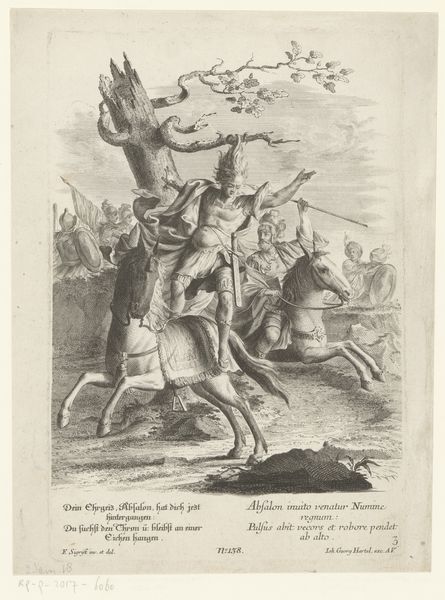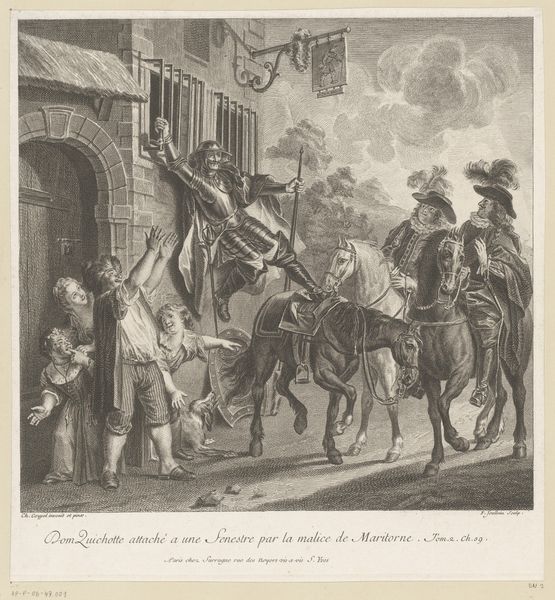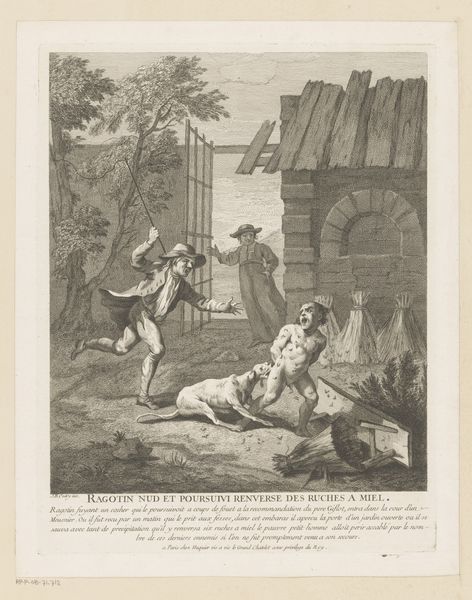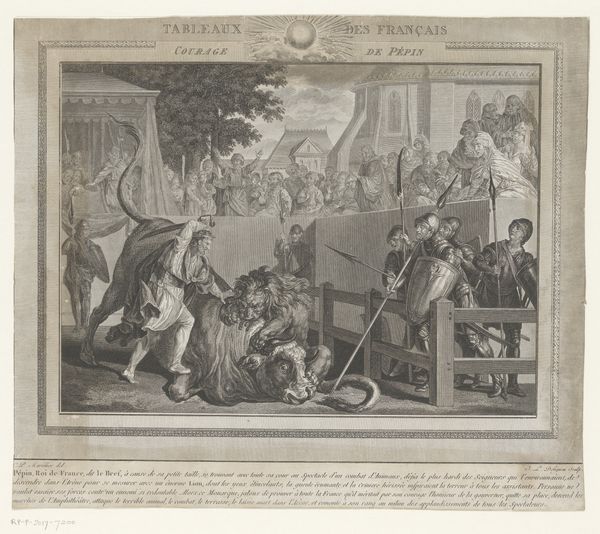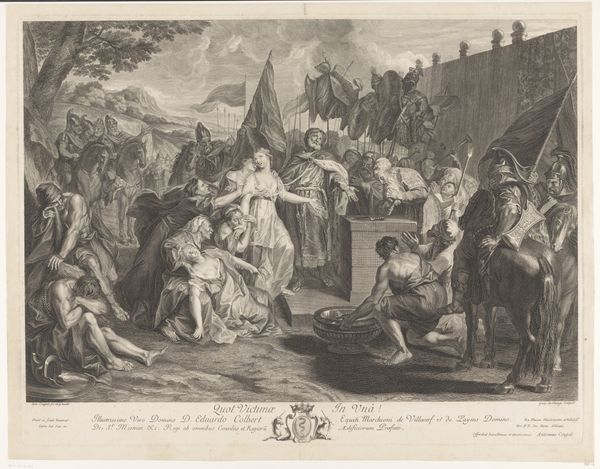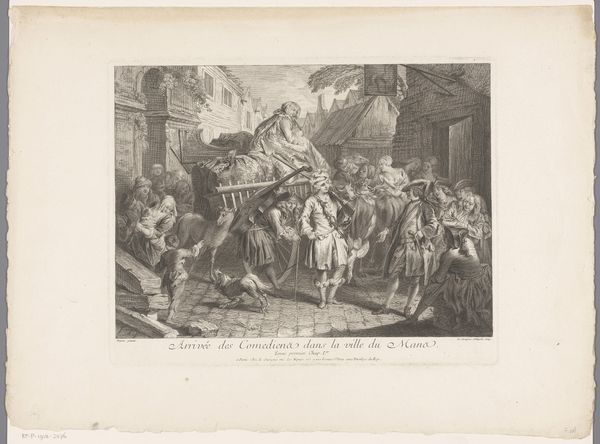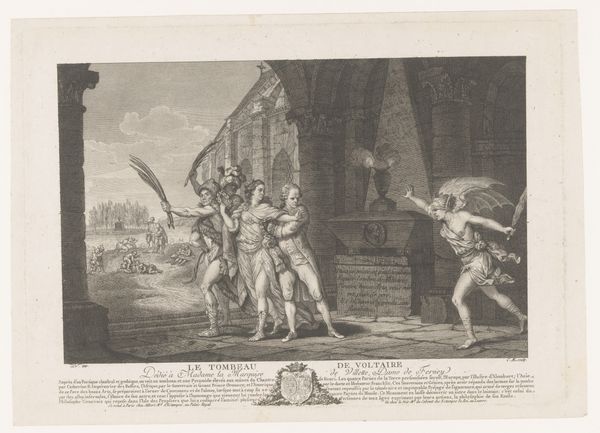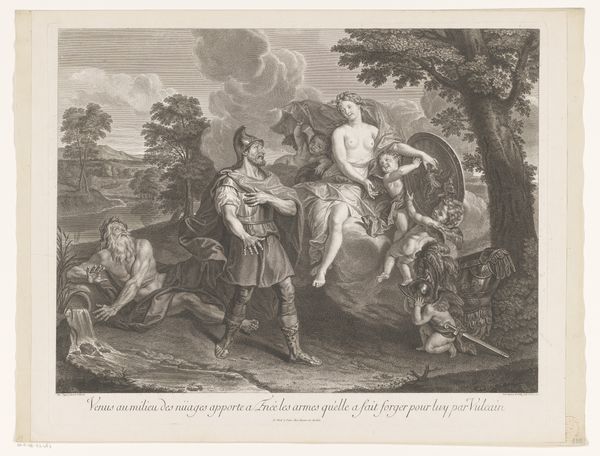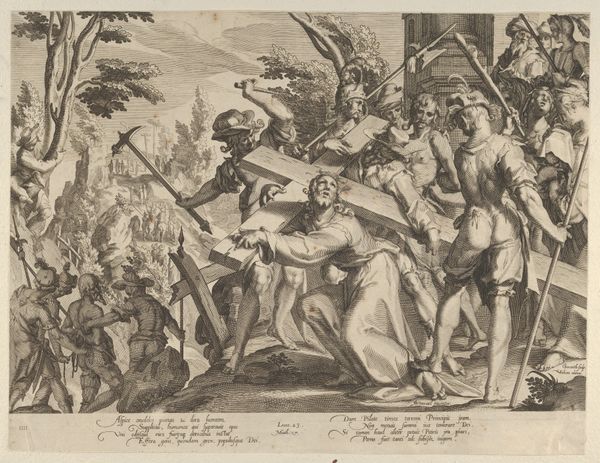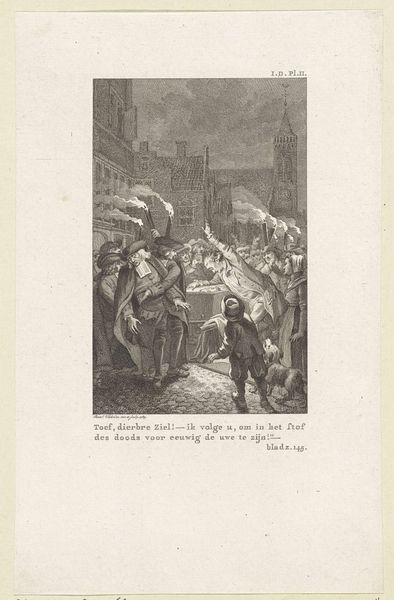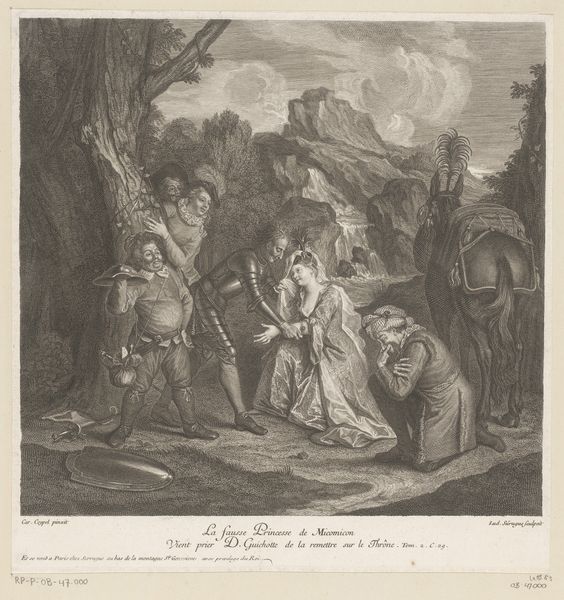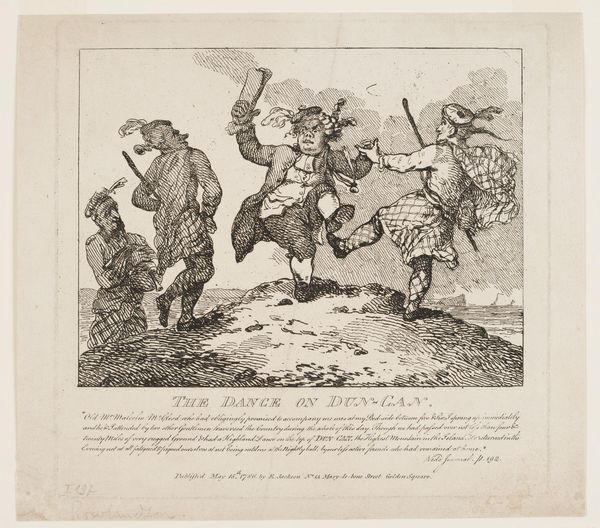
Don Quichot verlaat begeleid door de Dwaasheid zijn huis om dolend ridder te worden 1691 - 1767
0:00
0:00
louissurugue
Rijksmuseum
print, engraving
#
narrative-art
#
baroque
# print
#
old engraving style
#
figuration
#
genre-painting
#
history-painting
#
engraving
Dimensions: height 310 mm, width 300 mm
Copyright: Rijks Museum: Open Domain
Curator: Here we have an engraving by Louis Surugue, active between 1691 and 1767, titled "Don Quixote Led by Folly and Inflamed by the Extravagant Love of Dulcinea Leaves Home to Become a Knight-Errant." It's currently held at the Rijksmuseum. Editor: Whoa. Right away, I feel like I've stumbled into someone's fever dream. The landscape feels so unstable and exaggerated, doesn’t it? Curator: That exaggeration is deliberate, serving to visualize Don Quixote’s delusional state and the overall critique of chivalric romances prevalent during the Baroque period. This work captures a key moment in Cervantes’ narrative: Don Quixote embarking on his fantastical adventures, driven by his idealized, albeit misguided, perception of reality. The depiction is highly allegorical, reflective of the social commentary common in 17th and 18th-century art. Editor: Allegorical, okay, I see that. But honestly, my eye keeps going to the windmill transformed into some bizarre, weapon-wielding giant. And then there's Folly, literally leading the charge. Is she… helpful? Harmful? Or just riding the chaos? Curator: Precisely! The figure of Folly, guiding Quixote, is pivotal. Her presence, alongside Cupid, highlights how Don Quixote's actions are driven by both irrationality and an overly romanticized view of love and chivalry. This commentary is really important when looking at themes of gender, power, and representation of the ideals in that historical moment. He’s chasing an outdated system, an impossible dream fueled by imagination. Editor: You know, looking closer at his face… there's this intense commitment to something that is also… silly? The whole image is making me consider the narratives we buy into, individually and as a society. Curator: Absolutely. And the print medium itself allows for broad dissemination of such critical perspectives. Editor: This feels like a cautionary tale mixed with a wink. Maybe it’s a reminder that reality is far more nuanced and messy than our imagined ideals? Curator: Perhaps it invites us to consider what folly truly means within different contexts, across varied sociopolitical narratives. Editor: Okay, I'm sold. What felt chaotic a moment ago now has me seeing all these layered levels of commentary. Curator: That interplay is so much of what makes this print both relevant historically and resonant even now.
Comments
No comments
Be the first to comment and join the conversation on the ultimate creative platform.

